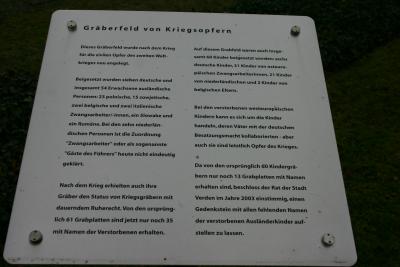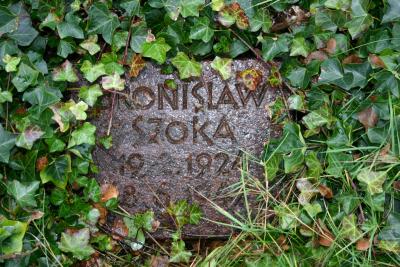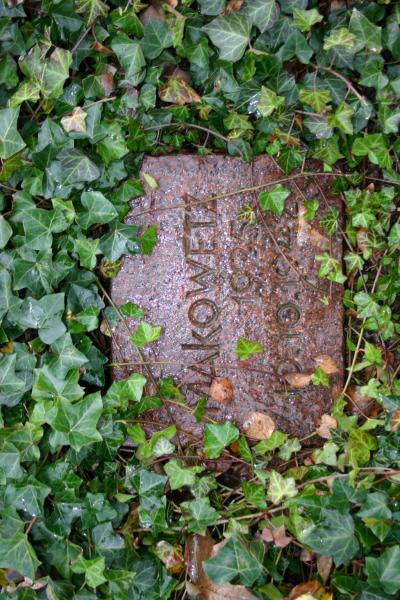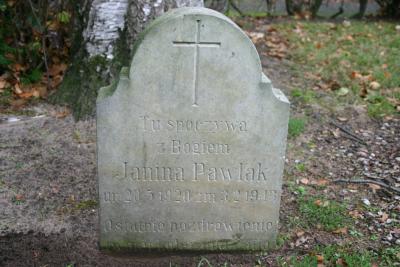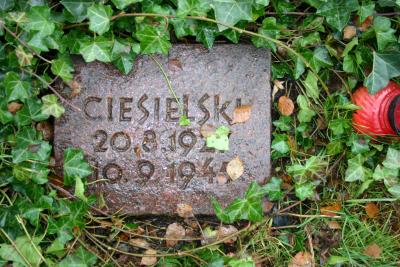Verden
DOMAGAŁA JÓZEF Rifleman a.k.a. "Ziutek" (in the archives of the Warsaw Uprising Museum as Domagało)
* 10.2.1931 Lublin
prisoner of war No. 223 453 Stalag X B Sandbostel and Stalag VI C Oberlangen
† 13.6.1945 Verden
On a round plate at the base of the monument there is an inscription in German:
In memory of those who died in Verden/all the children of forced labourers from Eastern Europe, Belgium and the Netherlands
[translated from Polish]
The prisoner-of-war route of Józef Domagała until the liberation of Stalag VI C is clear, but there is no certain information about his further fate. The document, drawn up on the 12th of August 1987, reports that his remains were transferred on the 20th day of 1972 to Warsaw, but no other documents confirm this.
The plot of foreigners, civilian victims of the war, at the cemetery in Verden was established in the first months after the end of the warfare. The graves located in different parts of the necropolis were moved to one location. It has become the place of final rest to 54 adults, including 23 of Polish nationality, mostly forced labourers. There are also the graves of 60 children there, who died between January 1940 and November 1945 in primitive delivery facilities for forced labourers from Eastern Europe. Children whose mothers returned to their place of work after a few days in a so-called nursing home were deprived of adequate food and medical care. As a result, they died in a planned manner, as people of lesser value, according to the Nazi ideology, assuming the superiority of the Germanic race. Over time, the graves were forgotten, but 35 plaques with the names of adults and 13 plaques with the names of children survived. At the beginning of the 21st century, more than fifty years after the birth and almost immediate death of these children, the Association of Regional History Lovers in Verden began to seek to commemorate them. On the basis of documentation prepared by this organisation, several dozen children's graves were reconstructed. In 2003, the town council decided to commemorate the children who died and were buried at this cemetery. As part of this, an information board with a text in German was set up there.
